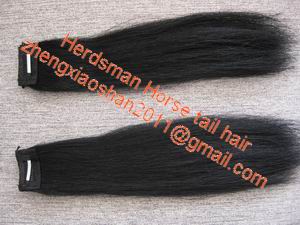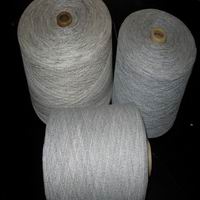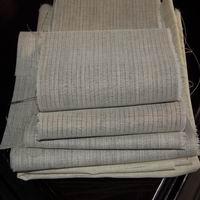dont forget to look at some other seasonal Thanksgiving fung
! The obvious choice for this months fungus is Stereum ostrea, false tails the lse turkey tail fungus. Like the true turkey tail fungus, Trametes versicolor, the n-shaped fruiting body has bands on it that remind one of the tail of a turkey. The easiest way to distinguish between the two is that Trametes has pores on the underside
of the shelf-like fruiting body, while Stereum has no pores, just a brown smooth spore-bearing suce, as shown to the left. Both fungi are wood decayers, and both cause a white rot. The green color you see on the fruiting bodies is caused by an epiphytic green alga. It is actually difficult to find a Stereum ostrea fruiting body without the algae on it. The alga has a commensal relationship with the fungus, deriving no nutrients from it, but instead using the fungus to gain a better position in the environment, in this case for better photosynthesis. There is no physiological interaction between these commensal organisms. Compare this relationship to the interaction of Stereum with last months fungus Tremella mesenterica,Products, which is known to be parasitic on Stereum species.
Stereum is placed in the Coticiaceae, the crust fungi, by most authors. However as the Corticiaceae is split up, Stereum will probably be given a mily by itself, the Stereaceae. All members of this mily have some interesting characters. Most lack clamp connections in the fruiting bodies, and all have amyloid spores. Amyloid means the spores turn blue in Melzers reagent, the active ingredient of which is iodine.
There are a number of species of Stereum throughout the world. The species seem to ll into two groups, the bleeders and the non-bleeders. If you find a bleeder, such as Stereum sanguinolentum (to the left) when its fresh you can cut or scratch it to make it ooze a red substance that makes it look like its bleeding. My best guess is that this may function somewhat like the latex in Lactarius species, which presumably discourages insects from grazing on the fruiting body by filling their mouths with sticky fluid when they bite into the fruiting body. Some researchers place the bleeding Stereum species into another genus, Haematostereum (haem- refers to blood), but most, myself included, prefer to keep them in the genus Stereum because the microscopic characters are so similar. In the grand scheme of things, I consider myself a lumper rather than a splitter, although some who have seen our work on Armillaria might argue with me on that point.
The species to the right is Stereum complicatum,false tails the parchment fungus. It is very common in our area, and Ive seen it all over the co,untry. Its one of the non-bleeders. You can often find it completely resupinate, or crusty, over the suce of a log before it begins to form very thin shelves such as these.
Now I know Ill get email about this, but theres some complications of all the names Ive used here. There is some controversy about which species we have here in the north. It seem that Stereum ostrea is partially compatible (i.e. some isolates will mate some of the time) with Stereum hirsutum, and for that reason some would call this species Stereum hirsutum var. ostrea. A similar situation occurs with Stereum complicatum, which might be called Stereum hirsutum variety complicatum Things get complicated... errr... tricky when we try to place names on specimens-- the fungi just dont read the books like they should to know what they are supposed to look like.
I hope you enjoyed this months fungus. Maybe you can find some Stereum ostrea and some pine cones to make some turkey placecards or turkey vors or a turkey centerpiece for your Thanksgiving dinner table. Be sure to send pictures if you do! (Wouldnt Martha be proud?) Also, dont forget to look at some other seasonal Thanksgiving fungi -- check out my popular Fungi that must be overcome to have a traditional Thanksgiving dinner.I hope you have a Happy Thanksgiving! (or a happy Just Another Thursday if youre reading this from outside the USA...)
If you have anything to add, or if you have corrections or comments, please write to me at volk.
This page and other pages are Copyright 2000 by Thomas J. Volk, University of Wisconsin-La Crosse.
查看相关产品:












